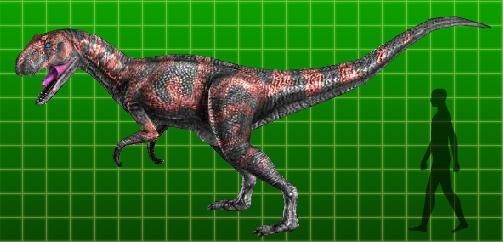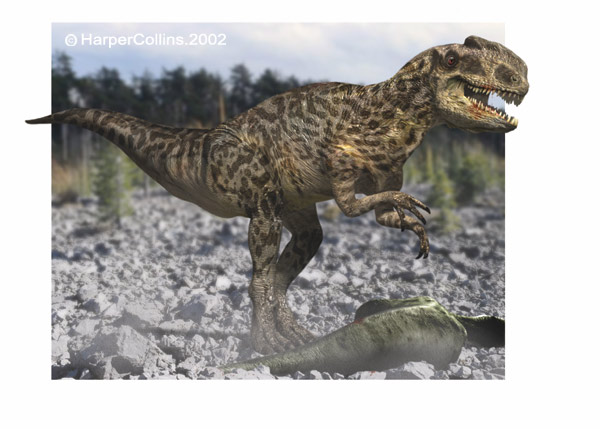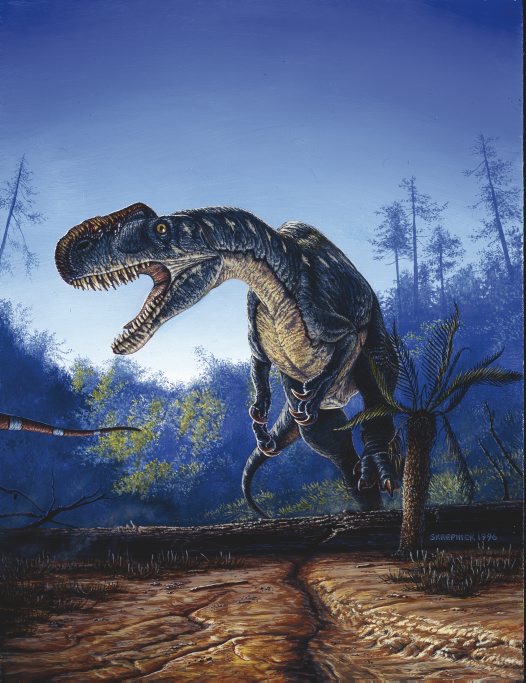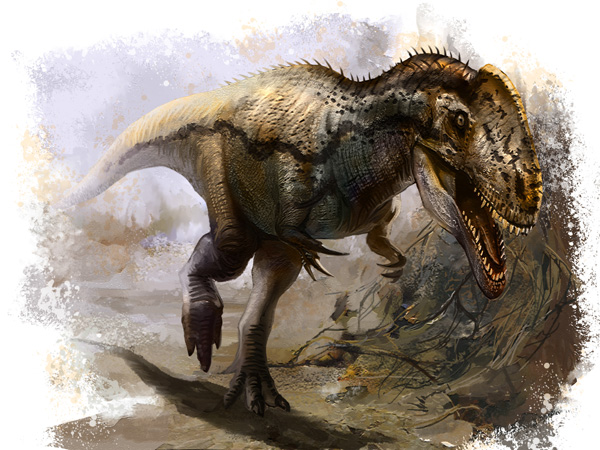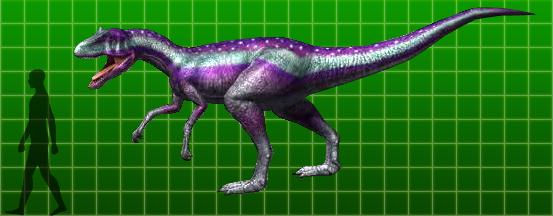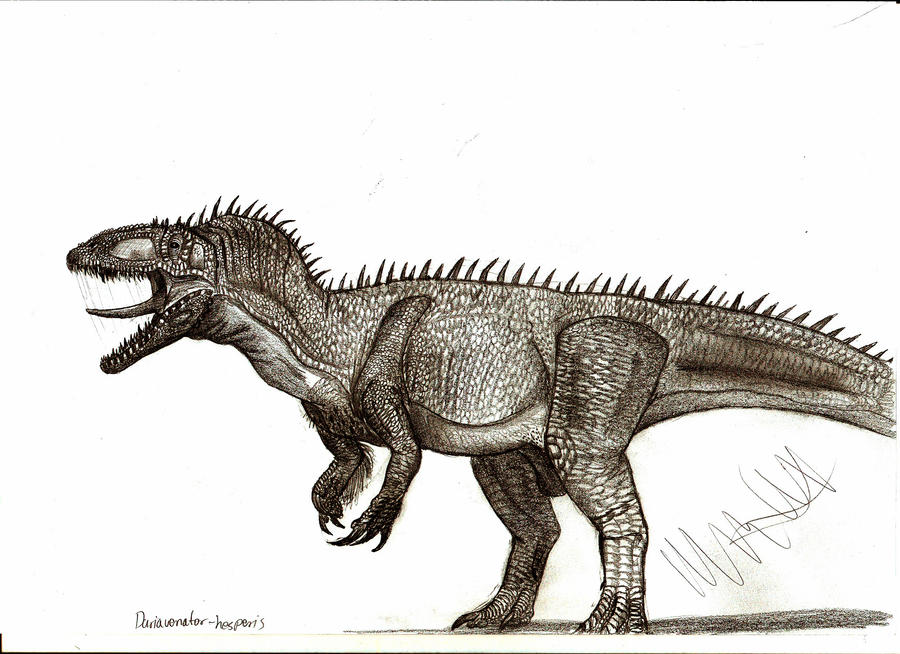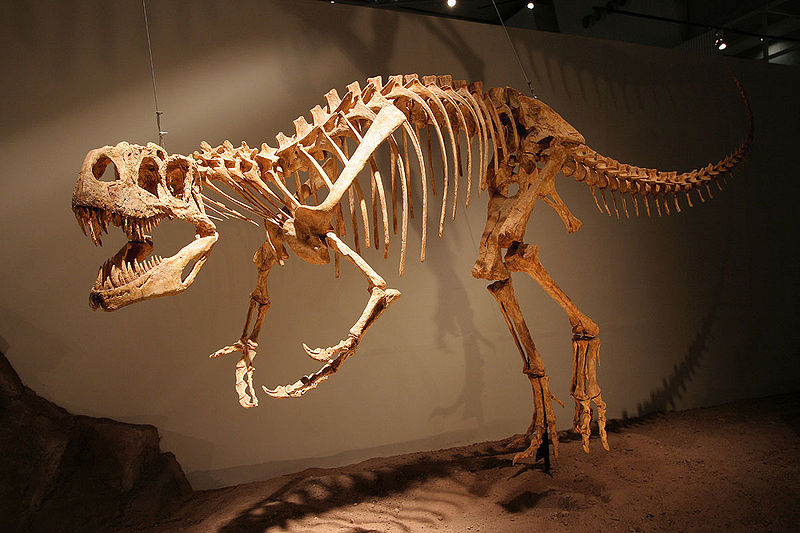[Recent Entries][Archive][Friends][User Info]
Below are the 11 most recent journal entries recorded in the "Сообщество, посвящённое ра" journal:| January 21st, 2013 | |
|---|---|
| 07:28 pm [industrialterro] [Link] |
Torvosaurus Торвозавр (Torvosaurus tanneri) – гигантский хищный динозавр позднеюрской эпохи. Относится к семейству Megalosauridae (часть Spinosauroidea), ближайший родственник знаменитого мегалозавра. Достигал 12 метров в длину и веса 5 тонн. Тело массивное, голова крупная (длина черепа больше 1,5 метра), передние конечности трехпалые, редуцированные. Ноги относительно короткие. Описан в 1979 году из позднеюрских (киммеридж) отложений формации Моррисон в Колорадо, найден также в Вайоминге и Юте. К этому же виду может относиться мегалозавр эдмарка (Edmarka rex) из поздней юры Вайоминга (из-за огромных размеров неофициально прозванный «Терминатором») и бронтораптор (Brontoraptor) из киммериджа Колорадо. В 2000 году остатки очень крупного (длина черепа около 1,58 м) торвозавра были найдены в позднеюрских отложениях Португалии. Таким образом, торвозавр был одним из самых крупных хищных динозавров юрского периода наряду с эпантериасом и заврофаганксом. В целом, останки мегалозавров в формации Моррисон встречаются гораздо реже, чем останки аллозавров и цератозавров. Можно предположить, что торвозавры не охотились стаями. Возможно, эти громадные хищники питались в основном падалью. Torvosaurus (pron.: /ˌtɔrvɵˈsɔrəs/) is a genus of large theropod dinosaur that lived during the Late Jurassic period (mid-late Kimmeridgian stage in North America, early Tithonian stage in Europe). The name Torvosaurus means "savage lizard" and is derived from the Latin torvus ("savage") and the Greek σαυρος/sauros ("lizard"). Fossilized remains of Torvosaurus have been found in North America and Portugal. Torvosaurus reached 9 to 11 meters (30 to 36 ft) in length and an estimated weight of about 2 metric tons (2.2 tons), which made it the largest carnivore of its time, except for Epanterias (which may have been just a big Allosaurus) and Saurophaganax. It was first discovered by Daniel and Vivian Jones, of Delta, Colorado, in the rocks of the Morrison Formation at the Dry Mesa Quarry, Colorado in 1971 and excavated by James A. Jensen and Kenneth Stadtman in 1972. The genus and the type species T. tanneri were named and described in 1979 by Peter M. Galton and Jensen. The type specimen from Colorado was further described by Brooks Britt, and the Portuguese specimen by O. Mateus and M.T. Antunes. The holotype is represented by an upper arm bone (humerus) and lower arm bones (radius and ulna). Additional material includes some skull bones, back bones, hip bones and 'hand' bones. Torvosaurus is related to the earlier Megalosaurus but is seemingly more advanced. Its classification is still uncertain but its family Megalosauridae is most commonly held as a basal branch of Tetanurae, less derived than carnosaurs or coelurosaurs, and likely related to the spinosaurids. The size of Torvosaurus is not definitely known because only incomplete material has been found, but it was a large theropod. North American Torvosaurus material is estimated as belonging to an individual about 9.0 meters long (29 ft), with a weight of about 1.95 metric tons (2.15 tons). Material from Portugal indicates even larger animals. In 2006 a nearly complete maxilla found in Portugal was assigned to Torvosaurus tanneri. It measured 63 cm in length (2.13 ft), significantly larger than the 47 cm (1.54 ft) long maxilla of the American specimen (total skull length 118 cm [3.87 ft]). Based on this, a skull length of 158 cm (5.18 ft) was estimated for the Portuguese specimen. This is comparable to the largest T. rex skulls, and makes Torvosaurus the largest known Jurassic theropod (surpassing Saurophaganax/Allosaurus maximus and Edmarka), and among the largest of all theropods. A partial femur from another individual belongs to an animal estimated as 11 m (36 ft) long. Репродукции (1, 2, 3, 4, 5, 6, 7, 8, 9, 10, 11, 12, 13, 14, 15, 16):
( Read More ) Размеры тела в сравнении с человеком и другими гигантскими хищниками (закрашен тёмно-синим цветом):
Ископаемые останки и реплики (1, 2, 3, 4, 5, 6, 7, 8, 9, 10):
( Read More ) Tags: Вымершие рептилии, Юра, авеметатарзалии, архозавроморфы, архозавры, диапсиды, динозавроморфы, динозавры, мегалозавриды, тероподы, ящеротазовые |
| November 11th, 2012 | |
| 05:34 pm [industrialterro] [Link] |
Piveteausaurus Piveteausaurus (meaning "Jean Piveteau's lizard") is a genus of theropod dinosaur known from a partial skull discovered in the Middle Jurassic Marnes de Dives formation of Calvados, in northern France. The partial braincase that became the type specimen of Piveteausaurus was first described in 1923 by French paleontologist Jean Piveteau in illustrations and photographs of the specimen (MNHN 1920-7). The braincase is comparable in size to that of a large Allosaurus, and resembles that of another megalosauroid, Piatnitzkysaurus from Argentina. Piveteau grouped this partial skull with other specimens found earlier in that locality and described in 1808 by French naturalist Georges Cuvier. In 1861 English paleontologist Richard Owen assigned the fragments to the species Streptospondylus cuvieri, and Piveteau included the skull he found in the same species. MNHN 1920-7 was found by local collector Dutacq in rocks thought to be Oxfordian (Upper Jurassic), of the Vaches Noires cliffs near Dives in Normandy, France, and was after being reported by amateur geologist Cazenave in 1920 acquired by Professor Marcellin Boule for the Muséum national d'histoire naturelle. Later these rocks were reevaluated as older (Upper Callovian, Middle Jurassic, ~161 million years old). MNHN 1920-7 was reevaluated in 1964 by Alick Walker as part of his work on Ornithosuchus and the evolution of the Carnosauria. He assigned MNHN 1920-7 to Eustreptospondylus as the holotype, or type specimen, of the new species E. divesensis. The other bone fragments described by Cuvier and attributed to S. cuvieri by Owen were also transferred, as a "matter of convenience," but without conviction on the part of Walker, to the new species, E. divesensis. It was given its own genus in 1977 by Philippe Taquet and Samuel Welles: Piveteausaurus, named after Piveteau. Taquet and Welles removed the postcranial bones, conveniently associated with the skull by Walker, from the species. Later the braincase would be regarded by Gregory S. Paul as a species of Proceratosaurus (P. divesensis), but this assignment was rejected by other researchers. While the braincase appears to be distinct, the limited remains mean Piveteausaurus has not been easy to classify. It has been compared to Ceratosaurus, Eustreptospondylus, and Proceratosaurus, and was interpreted as a species of the latter two genera at various times. Piveteausaurus was originally regarded as a megalosaurid as a "matter of convenience", as its describers did not want to name a new family for such fragmentary remains. Tom Holtz and colleagues (2004) considered it to be an indeterminate member of Tetanurae, though they did not include it in a phylogenetic analysis. The first such analysis was performed by Benson in 2010. He found that while its exact placement was unresolved, it always grouped with a member of the clade Megalosauridae, and so most likely belonged to that family.
Tags: Вымершие рептилии, Юра, авеметатарзалии, архозавроморфы, архозавры, диапсиды, динозавроморфы, динозавры, мегалозавриды, тероподы, ящеротазовые |
| 05:10 pm [industrialterro] [Link] |
Piatnitzkysaurus Piatnitzkysaurus (named to honor Alejandro Mateievich Piatnitzky (1879-1959), Russian-born Argentine geologist) is a genus of theropod dinosaur. It is known from the Canadon Asfalto Formation, Middle Jurassic (Callovian stage) of what is now Argentina. Once thought to be a basal carnosaur, it may instead be a megalosauroid. Partial skeletons are known (two fractured skulls and parts of the postcranial skeleton) and show Piatnitzkysaurus was a lightly built medium-sized bipedal carnivore with robust arms around 4.3 metres (14 ft) long and around 450 kilograms (990 lb) in mass, though such estimates apply to the holotype, which is a subadult. Its ischium is 423 millimetres (16.7 in) long. Its braincase resembles that of another megalosauroid, the megalosaurid Piveteausaurus from France. The type species, Piatnitzkysaurus floresi, was described by Jose Bonaparte in 1979.
Размеры тела в сравнении с человеком (гипотетическая взрослая особь):
Ископаемые останки и реплики (1, 2, 3, 4, 5):
Tags: Вымершие рептилии, Юра, авеметатарзалии, архозавроморфы, архозавры, диапсиды, динозавроморфы, динозавры, мегалозавриды, тероподы, ящеротазовые |
| November 8th, 2012 | |
| 06:27 pm [industrialterro] [Link] |
Monolophosaurus Monolophosaurus ( A nearly complete skeleton was unearthed in 1984. At first, before description in the scientific literature, it was known in the press as "Jiangjunmiaosaurus", a nomen nudum. In 1993 Zhao and Currie named the type species Monolophosaurus jiangi; the species name refers to Jiangjunmiao ("an abandoned desert inn") near which the holotype IVPP 84019 was found. Monolophosaurus was originally termed a "megalosaur" and has often since been suggested to be an allosauroid. Carr (2006) even suggested that the "proceratosaurid" "tyrannosauroid" Guanlong was a subadult Monolophosaurus and therefore an "allosauroid", by noting both taxa have a large, thin, and fenestrated midline crest, but this is probably not the case. Smith et al. (2007) was the first publication to find Monolophosaurus to be a non-neotetanuran tetanuran, by noting many characters previously thought to be exclusive of Allosauroidea to have a more wider distribution. Also, Zhao et al. (2009) noted various primitive features of the skeleton suggesting that Monolophosaurus could be one of the most basal tetanuran dinosaurs instead. Benson (2008, 2010) placed Monolophosaurus in a clade with Chuandongocoelurus that is more basal than Megalosauridae and Spinosauridae in the Megalosauroidea. Latter, Benson et al. (2010) found the Chuandongocoelurus/Monolophosaurus clade to be outside of Megalosauroidea and Neotetanurae, near the base of Tetanurae.
Репродукции (1, 2, 3, 4, 5, 6, 7, 8, 9, 10, 11, 12, 13, 14, 15):
( Read More ) Размеры тела в сравнении с человеком:
Ископаемые останки и реплики (1, 2, 3, 4, 5, 6, 7):
( Read More ) Tags: Вымершие рептилии, Юра, авеметатарзалии, архозавроморфы, архозавры, диапсиды, динозавроморфы, динозавры, мегалозавриды, тероподы, ящеротазовые |
| November 7th, 2012 | |
| 01:58 pm [industrialterro] [Link] |
Megalosaurus Мегалоза́вр (Megalosaurus) — род хищных двуногих ящеротазовых динозавров середины юрского периода (181—169 млн. лет назад), останки которого найдены в южной Англии, Франции и Португалии. Стал первым найденным и описанным динозавром. Мегалозавры достигали 9 метров в длину и были двуногими хищниками, весившими около тонны. Структура шейных позвонков позволяет утверждать, что их шея была достаточно гибкой. Задние ноги имели три пальца, направленные вперёд, и один палец, направленный назад, и были достаточно сильны, чтобы удерживать вес тела. Передние конечности укорочены, хотя и не настолько как у тираннозавра. Добычей мегалозавра могли служить сарколесты, лексовизавры и цетиозавры. Вопреки распространённому мнению, охотиться на игуанодона, открытого вторым после мегалозавра, он не мог, поскольку эти динозавры жили в разное время. Предполагается, что наряду с хищничеством, он мог получать пищу и подбирая падаль. Часть кости мегалозавра была обнаружена в 1676 году в известняковой каменоломне возле Оксфорда (Великобритания). Окаменелось была продана профессору оксфордского университета Роберту Плоту (англ. Robert Plot; 1640—1696), который внёс её описание в свою книгу «Естественная история Оксфордшира» (1677). Он правильно распознал в находке осколок бедренной кости животного, однако учтывая ее огромный размер, он не мог понять какого именно. Позже кость стала причиной любопытного казуса. В 1763 она попала в руки Ричарда Брукса, назвавшего животное Scrotum humanum (лат. scrotum — «мошонка», humanum — «принадлежащая человеку»), поскольку кость напоминала окаменевшую человеческую мошонку. В то время уже была создана бинарная номенклатура, и данное название теоретически имеет приоритет перед Megalosaurus, однако оно было забыто более чем на 50 лет и потеряло свой приоритет. Поэтому первый открытый динозавр не стал называться Scrotum sp. Новые находки были сделаны уже в 1815 году также вблизи Оксфорда. Их купил Уильям Баклэнд, однако долгое время не мог определиться, к какому же животному их отнести. Лишь в 1818 году Баклэнда посетил французский естествоиспытатель Жорж Кювье, который и предположил, что кости принадлежали ящероподобному животному больших размеров. В 1824 году Баклэнд приобрёл ещё останки и описал по ним новый род Megalosaurus, в 1826 Фердинанд Ритген (Ferdinand Ritgen) дал животному биномиальное название Megalosaurus conybeari, которое, однако, было забыто. Лишь в 1827 Гидеон Мантелл дал ему принятое и в наши дни название Megalosaurus bucklandii. Термин «динозавры» был предложен в 1842 Ричардом Оуэном. В 1850-е мегалозавр представлялся большим четвероногим животным, чем-то средним между крокодилом и млекопитающими. Затем, когда были найдены хорошо сохранившиеся скелеты других тероподов, он был «поставлен на задние ноги». Одно время к роду мегалозавров относили всех европейских теропод. С тех пор классификация была не раз пересмотрена, однако данный факт может создавать трудности при изучении старой научной литературы. ( Read More ) Репродукции (1, 2, 3, 4, 5, 6, 7, 8, 9, 10, 11, 12):
( Read More ) Ранние неправильные реконструкции:
Размеры тела в сравнении с человеком:
Ископаемые останки и реплики (1, 2, 3, 4, 5, 6, 7, 8, 9):
( Read More ) Tags: Вымершие рептилии, Юра, авеметатарзалии, архозавроморфы, архозавры, диапсиды, динозавроморфы, динозавры, мегалозавриды, тероподы, ящеротазовые |
| November 5th, 2012 | |
| 08:06 pm [industrialterro] [Link] |
Marshosaurus Marshosaurus was a genus of medium sized theropod, with a size up to 5 or 6 meters (16 to 20 feet) in length and a skull about 60 cm (2 feet) long. It is known from parts of at least three (possibly four) individuals from the Morrison Formation of Utah and Colorado. The holotype is a left ilium, or upper pelvis bone found at the Cleveland-Lloyd Quarry in central Utah. It was named by James Madsen (1976) for Othniel Charles Marsh, who described many dinosaur fossils during the Bone Wars. The species name was chosen "in honor of the bicentennial of the United States of America". Characters on the skeleton show it was an avetheropod, a member of Avetheropoda, a group of more bird-like theropods including Tyrannosaurus, Velociraptor and Allosaurus. Benson (et al., 2009) found it to be a megalosauroid, using a lot of new characters of new Megalosaurus specimens. It lived during the Kimmeridgian (Late Jurassic), approximately 155 - 150 mya. One right ilium of a Marshosaurus bicentesimus is deformed by "an undescribed pathology" which probably originated as a consequence of injury. Another specimen has a pathological rib. In a 2001 study conducted by Bruce Rothschild and other paleontologists, 5 foot bones referred to Marshosaurus were examined for signs of stress fracture, but none were found.
Размеры тела в сравнении с человеком:
Tags: Вымершие рептилии, Юра, авеметатарзалии, архозавроморфы, архозавры, диапсиды, динозавроморфы, динозавры, мегалозавриды, тероподы, ящеротазовые |
| 07:03 pm [industrialterro] [Link] |
Magnosaurus Magnosaurus (meaning 'large lizard') was a genus of basal tetanuran theropod dinosaur from the Middle Jurassic of England. It is based on fragmentary remains and has often been confused with or included in Megalosaurus. In 1923, Friedrich von Huene named Megalosaurus nethercombensis from a partial skeleton (OUM J12143) from the Aalenian-Bajocian-age Middle Jurassic Inferior Oolite, found in the nineteenth century by W. Parker near Nethercomb, north of Sherborne, in Dorset, England. The material included partial dentaries, dorsal and caudal vertebrae, a partial ilium, a partial right pubis, internal casts of the femora, and tibiae, from a possibly juvenile individual. Huene interpreted it as a more primitive species of Megalosaurus. In 1926, he named the tooth species Megalosaurus lydekkeri for a specimen, BMNH 41352, from the Lower Lias (Lower Jurassic) of England that Richard Lydekker had first described in 1888. Finally, in 1932, he created the genus Magnosaurus for M. nethercombensis, referred M. lydekkeri to it, and created a third species, M. woodi, for the genus. M. woodi was based on a tibia (BMNH R.3542) from the Lower Lias, which he simultaneously and accidentally also named Sarcosaurus andrewsi; the latter name was in 1956 by von Huene given priority. Even more confusing, in the same 1932 publication von Huene renamed Sarcosaurus woodi into Magnosaurus woodi. Until the 1990s, the genus had been ignored as a species of Megalosaurus. However, with growing concern over what exactly is constituted by Megalosaurus, Magnosaurus has been generally separated as its own genus. Also, there are morphological differences: for example, possible Megalosaurus tibiae are compressed at the far end, unlike those of Magnosaurus. Rauhut (2003) considered it and Eustreptospondylus to be the same genus, because the two share a similarly expanded front tip of the dentary and enlarged third dentary tooth. He therefore renamed Eustreptospondylus oxoniensis a Magnosaurus oxoniensis but this has not been generally followed. Reviews have found it to most likely be a basal tetanuran, probably a megalosaurid. A detailed redescription by Roger Benson in 2010 concluded Magnosaurus was valid taxon, a megalosauroid megalosaurid, and at about 175 million years old the oldest certain known member of the Tetanurae. Because the remains are sparse and fragmentary, details about the life and behaviour of Magnosaurus are unknown. It would have been a bipedal carnivore of moderate size for a dinosaur. The most similar animals probably would be animals like Eustreptospondylus, Dubreuillosaurus, and Afrovenator. Paul (1988) roughly estimated the mass of the type individual as around 175 kg (386 lb), which would correspond to a length of roughly four metres (13.1 ft), judging by his estimates for the sizes of other theropods. Benson however, in 2010 gave a higher estimation of about half a tonne; the animal would have stood at over a metre at the hip.
Размеры тела в сравнении с человеком:
Tags: Вымершие рептилии, Юра, авеметатарзалии, архозавроморфы, архозавры, диапсиды, динозавроморфы, динозавры, мегалозавриды, тероподы, ящеротазовые |
| October 18th, 2012 | |
| 08:17 pm [industrialterro] [Link] |
Eustreptospondylus Eustreptospondylus ("well-curved vertebra", in reference to the arrangement of the spine in the original fossil) is a genus of megalosaurid dinosaur, from the Callovian stage of the Middle Jurassic period (165 to 161 million years ago) in southern England, at a time when Europe was a series of scattered islands (due to tectonic movement at the time which raised the sea-bed and flooded the lowland). The only known specimen of Eustreptospondylus may not be fully grown, and was about 4.63 metres (15.2 ft) long. It was carnivorous, bipedal and had a stiffened tail. It was a typical theropod, with powerful hind limbs, erect posture and small forelimbs. Eustreptospondylus was described originally by Sir Richard Owen, in 1841, as a new specimen of the species Megalosaurus cuvieri (later Streptospondylus cuvieri). The specimen, found in a brickpit in the Oxford Clay, north of Oxford, England, has since been lost but its description, when compared to 're-discovered' material, makes it likely that it was not the same as M. cuvieri, and it was assigned to its own genus and species Eustreptospondylus oxoniensis, in 1964. In 2000, Rauhut found that only minor differences in the hip bones make Eustreptospondylus different from a previously known megalosaur called Magnosaurus and, in 2003, he proposed that they should be the same genus (which would make the full species name Magnosaurus oxoniensis).
Репродукции (1, 2, 3, 4, 5, 6, 7, 8, 9, 10):
( Read more ) Размеры тела в сравнении с человеком:
Tags: Вымершие рептилии, Юра, авеметатарзалии, архозавроморфы, архозавры, диапсиды, динозавроморфы, динозавры, мегалозавриды, тероподы, ящеротазовые |
| October 14th, 2012 | |
| 06:01 pm [industrialterro] [Link] |
Duriavenator Duriavenator is a genus of theropod dinosaur described in 2008 by Roger Benson. The type species is D. hesperis, formerly known as Megalosaurus hesperis. Duriavenator lived during the Bajocian stage, around 170 million years ago, making it one of the oldest-known tetanurans. The genus name combines the Latin name of Dorset, Duria, with Latin for "hunter", venator. This genus has also gone under the unofficial name "Walkersaurus", which is a nomen nudum.
Tags: Вымершие рептилии, Юра, авеметатарзалии, архозавроморфы, архозавры, диапсиды, динозавроморфы, динозавры, мегалозавриды, тероподы, ящеротазовые |
| October 13th, 2012 | |
| 06:44 pm [industrialterro] [Link] |
Dubreuillosaurus Дюбрейлозавр — род хищных ящеротазовых динозавров из семейства мегалозавров. Дюбрейлозавр получил своё имя в 2002 году, после того, как первоначально его приняли за новый вид пекилоплеврона, крупного теропода, близкого к мегалозавру. Более поздние исследования показали, что он ближе к эустрептопондилу. У дюбрейлозавра короче морда, остальные отличительные признаки заключаются в незначительных различиях в строении их позвонков и лопаток. Хотя у этого динозавра не были обноружены гребни и рога, они вполне могли присутствовать у взрослых особей - единственный известный экземпляр дюбрейлозавра был детёнышем, а подобные выросты могли развиваться позже. Как и его родственники, дюбрейлозавр обладал короткими, но сильными трёхпалыми передними конечностями. Останки дюбрейлозавра были найдены в осадочных породах, накапливавшихся в мангровых болотах. Это позволяет предположить, что он охотился на рыб и других морских животных. Этот динозавр получил своё родовое название в честь семьи Дюбрейл (Dubreuil), которая обнаружила окаменелость дюбрейлозавра в 1994 году. Ископаемые останки дюбрейлозавра были найдены во Франции. Типовой вид D. valesdunensis был первоначально приписан к роду Poekilopleuron как P. valesdunensis. Ронан Аллен в 2005 году создал новый самостоятельный род под названием Dubreuillosaurus. По оценкам палеонтологов длина взрослого дюбрейлозавра составляла около 9 метров, высота около 3 метров, а вес около 1.5 тонн. Дюбрейлозавр имел удлинённый череп, длина которого была в 3 раза больше высоты. Дюбрейлозавр является плотоядным динозавром. В свете обнаружения останков дюбрейлозавра в прибрежных регионах, предполагается, что основную часть его рациона составляла рыба. Dubreuillosaurus is a genus of carnivorous dinosaur from the middle Jurassic Period. It was a megalosaurid theropod. Its fossils were found in France. The type species, D. valesdunensis, was originally assigned to the genus Poekilopleuron as P. valesdunensis. Ronan Allain in 2005 created the new genus name Dubreuillosaurus for this species. It was estimated to be at around 9 metres (30 ft) in length, and had an unusually low and long skull, with the length of the skull being three times the height.
Размеры тела в сравнении с человеком:
Tags: Вымершие рептилии, Юра, авеметатарзалии, архозавроморфы, архозавры, диапсиды, динозавроморфы, динозавры, мегалозавриды, тероподы, ящеротазовые |
| May 28th, 2012 | |
| 09:22 pm [industrialterro] [Link] |
Afrovenator Афровенатор (Afrovenator) — род вымерших ящеротазовых динозавров из семейства мегалозавридов, группы тероподов, живших в юрском периоде (около 175—145 миллионов лет назад), на территории нынешней Африки. Окаменелости теропода были найдены в местности Agadez (формация Tiourarén) в Нигере. Впервые описан палеонтологом Полом Серено в 1994 году. Представлен одним видом — Afrovenator abakensis. Afrovenator ("African hunter") is a genus of megalosaurid theropod dinosaur from the mid Jurassic Period of northern Africa. It was a bipedal predator, with a mouthful of sharp teeth and three claws on each hand. Judging from the one skeleton known, this dinosaur was approximately 9 metres (30 ft) long from snout to tail tip and had a weight of about 1.5 tons. The remains of Afrovenator were discovered in the Tiourarén Formation of the department of Agadez in Niger. The Tiourarén was originally thought to represent the Hauterivian to Barremian stages of the early Cretaceous Period, or approximately 136 to 125 million years ago (Sereno et al. 1994). However, re-interpretation of the sediments showed that they are probably mid-Jurassic in age, dating Afrovenator to the Bathonian to Oxfordian stages, between 164 and 161 mya. The sauropod Jobaria, whose remains were first mentioned in the same paper which named Afrovenator, is also known from this formation. Afrovenator is known from a single nearly complete skeleton, featuring most of the skull (minus the mandible, or lower jaw), parts of the spinal column, hands, and forelimbs, a nearly complete pelvis, and complete hind limbs. This skeleton is housed at the University of Chicago. Most analyses place Afrovenator within Megalosauridae, which was formerly a "wastebasket family" which contained many large and hard-to-classify theropods, but has since been redefined in a meaningful way, as a sister taxon to the family Spinosauridae within the Megalosauroidea. A 2002 analysis, focused mainly on the noasaurids, found Afrovenator to be a basal megalosaurid. However, it did not include Dubreuillosaurus (formerly Poekilopleuron valesdunesis), which could affect the results in that region of the cladogram (Carrano et al. 2002). Other recent, more complete, cladistic analyses show Afrovenator in a subfamily of Megalosauridae with Eustreptospondylus and Dubreuillosaurus. This subfamily is either called Megalosaurinae (Allain 2002) or Eustreptospondylinae (Holtz et al. 2004). The latter study also includes Piatnitzkysaurus in this subfamily. A few alternative hypotheses have been presented for Afrovenator's relationships. In Sereno's original description, Afrovenator was found to be a basal spinosauroid (he uses the name "Torvosauroidea"), outside of Spinosauridae and Megalosauridae (which he calls "Torvosauridae") (Sereno et al. 1994). Finally, another recent study places Afrovenator outside of Megalosauroidea completely, and instead finds it more closely related to Allosaurus (Rauhut 2003). This is the only study to draw this conclusion. Megalosauridae was a family of relatively primitive tetanuran theropod dinosaurs, order Saurischia. They were small-to-large carnivores with sharp teeth and three claws on each hand. Some members of this group were Megalosaurus, Eustreptospondylus, Streptospondylus and Torvosaurus. Megalosaurids first appeared in the mid Jurassic and seemed to have been displaced and replaced by other theropods by the end of that period; their fossils are known from Europe, North America, South America and Africa. They are considered by most researchers (Sereno 2005, Olshevsky 1995, Holtz 2004, etc.) to be close relatives of the spinosaurs. Like Megalosaurus itself, the family Megalosauridae, coined by Huxley in 1869, had traditionally been used as a 'wastebasket' group, which included a wide variety of unrelated species (such as Dryptosaurus, Ceratosaurus, Indosaurus, and even Velociraptor). Because of this traditionally polyphyletic use, some scientists, such as Paul Sereno, reject the family name Megalosauridae in favor of Torvosauridae (coined by Jensen in 1985), despite the fact that Megalosauridae has priority under the ICZN rules governing family-level names in zoology. While a 2008 review of Megalosaurus by Benson and colleagues also found that the relationships of Megalosaurus to other theropods could not be determined, and that the assignment of basal spinosauroids to the family Megalosauridae should be discontinued, further work by Benson reversed this position, finding a well-supported Megalosauridae in phylogenetic analyses.
Размеры тела в сравнении с человеком:
Ископаемые останки (1, 2, 3, 4, 5):
Tags: Вымершие рептилии, Юра, авеметатарзалии, архозавроморфы, архозавры, диапсиды, динозавроморфы, динозавры, мегалозавриды, тероподы, ящеротазовые |










.jpg)







